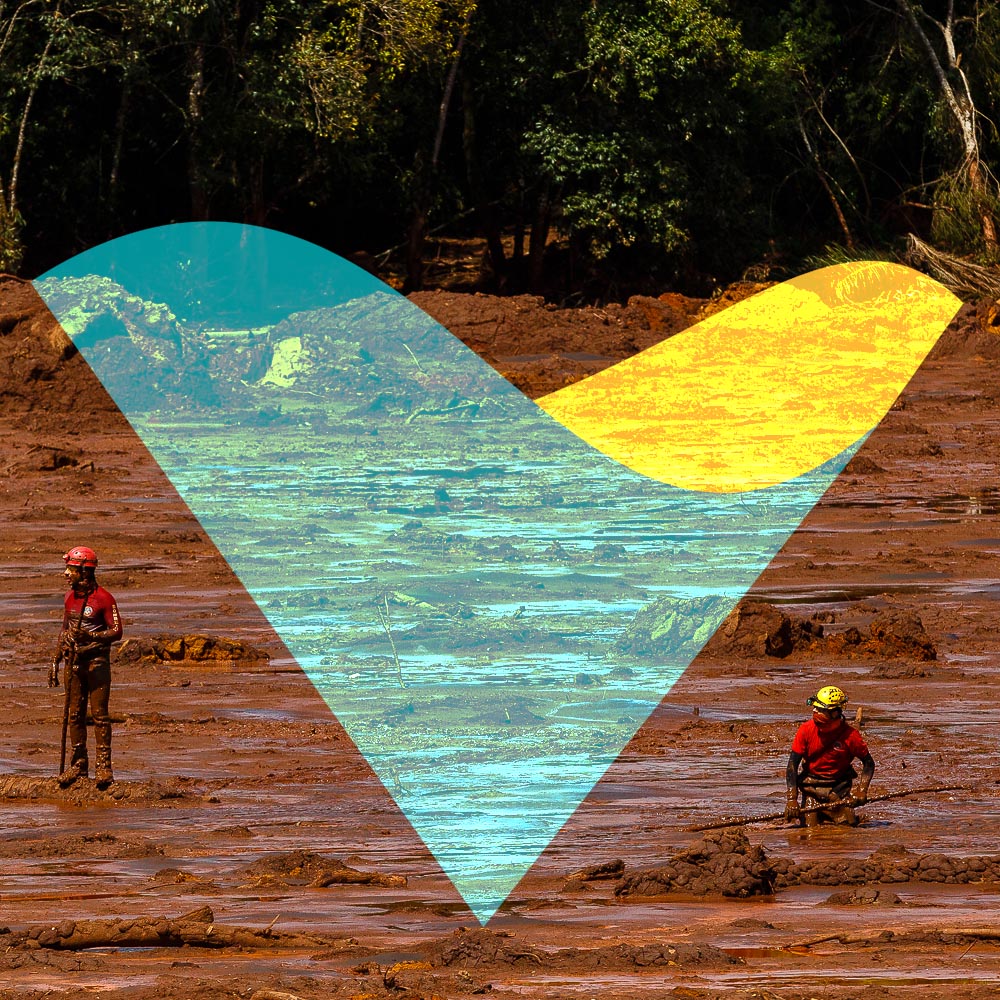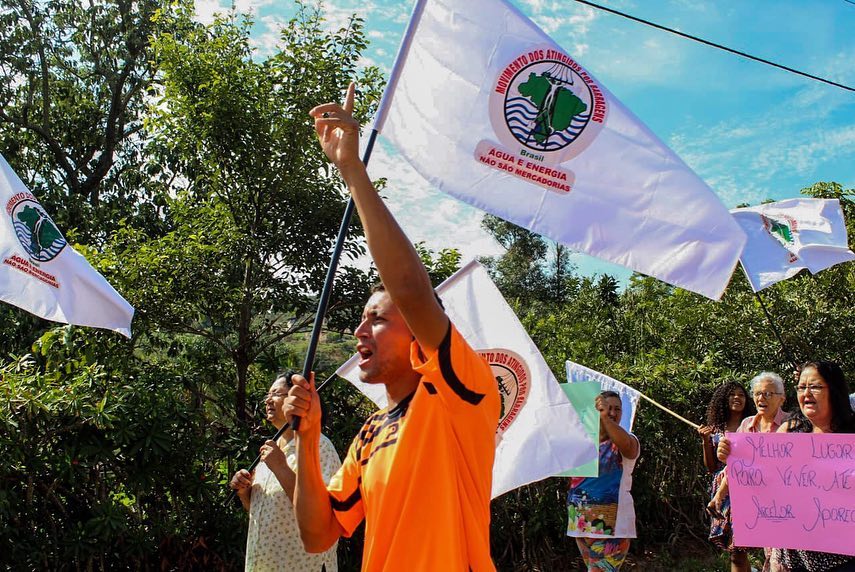Brazil // The mining business has turned Brazil into a time bomb~ 7 min

After Australia, Brazil is the second largest ore exporter in the world. The country has 430 ore dams, according to the report by the National Water Agency (ANA) of Brazil.
Following international trends, Brazil has fostered economic development at any price through capital incentives. It charges the lowest royalties (amounts paid to the government for natural mineral resources extraction rights) in the world, makes regulation more flexible in order to make granting licenses (even) easier and overlooks infrastructure security.
Mining has been defended as a priority by the Brazilian industry and agribusiness, and so it remains. Now it also has the support of President Jair Bolsonaro and the Environment Minister, Ricardo Salles.
The mining business has turned Brazil into a time bomb. There is an average of more than three disasters involving mine dams per year, according to the Dam Safety Report produced by ANA.
In particular, the state of Minas Gerais, in the Southeast Region of Brazil, has witnessed successive disasters. According to the Brazilian Mining Institute (IBRAM), Minas Gerais produces 67% of the national iron ore output. It is the best state for business tax exemptions and it witnesses a disaster involving mine dams every two years, according to data from the Dams Safety Report.
In 2014, it was a dam belonging to a mine in Itabirito, owned by Mineração Herculano. In 2015, there was a leak in the dam of Fundão mine in Mariana, owned by Samarco. In 2019 there was another one, this time in Brumadinho.
Vale S.A., one of the world’s largest mining companies and a specialist in the production of iron ores, pellets and nickel, was responsible for these last two disasters – since it is also the owner of Samarco.
“Vale cannot be condemned”
The structure of the Brumadinho dam was built in 1976 and acquired by Vale in 2001, when Ferteco, the former company owned by the German group ThyssenKrupp, was sold. The dam was undergoing shutdown process up until the time of the disaster.
It was on January 25, in what would otherwise be another normal Friday in the Parque das Cachoeiras. The I dam of the Córrego do Feijão Mine, 86 meters high – where the company was storing mineral waste – burst, causing an avalanche of toxic industrial waste.
The mud avalanche that flowed through the Park took with it company facilities and hundreds of rural properties in the Córrego do Feijão and Parque das Cachoeiras’ communities. It left another trail of environmental destruction, dead and missing people. 12 million cubic meters of toxic ores scattered over 46 kilometers of territory, where the Paraopeba river flows – essential for local communities’ subsistence.
Due to a Periodic Review of Dams Safety and Regular Dam Safety Inspection processes, TÜV Süd, a German certification company, had inspected dam I between June 13 and September 26, 2018. The structure’s stability was rated as low risk.
Dams like Brumadinho are made with the waste from the diggings themselves. Waste like mineral debris, rocks and land that, because they do not have commercial value, are deposited in layers in order to form the walls that support the dam. This construction technique is the cheapest, but it is also the one that carries the most security risks since it requires more maintenance.
Since 2015, Vale has accumulated more than 10 billion dollars in profits and its value has increased to 297 billion dollars. Nevertheless, the company decided to cut maintenance costs for dams between 2014 and 2017 and, instead of 474 million, it started investing only 202 million dollars.
In the case of the Mariana mine dam in 2015, the investigations carried out concluded that there were failures in the construction, maintenance and monitoring of the dam. These conclusions resulted in an obligation to compensate those affected, along with mere fines. Failures and consequences that reflect the uselessness of the regulation instruments.
In the case of Brumadinho, investigations have barely begun, but everything points to a similar outcome. Three Vale employees and two Tüv Süd employees were arrested shortly after the dam broke. However, the Supreme Court ended up releasing them only a week later.
During the month of February, Brazilian Police arrested 8 more Vale employees: four managers and four security technicians. All of them are under suspicion of criminal responsibility, although all these employees were integrated into an hierarchical structure in which shareholders call the shots. Apart from these arrests, the police was also ordered to carry out fourteen search and seizure requests targeting Vale and Tüv Süd and involving four other employees.
Meanwhile, a Parliamentary Commission of Inquiry into Brumadinho and other dams was also created. The first person to be heard was Vale’s former CEO, Fabio Schvartsman, who said that he had never known of any imminent risk of the company’s dams breaking. The same former president said that Vale is “a Brazilian jewel” and, for that reason, cannot be condemned, “however great the tragedy may have been”.
Salim Mattar, a Secretary of the Economy Minister of Bolsonaro and responsible for the country’s privatizations, said the same. He said that Vale is too important to be “demonized” and that what happened in Brumadinho is easily comparable to an airplane crash.
As of this moment, several dams are at risk of collapsing. Many people have since been evacuated and sent to hotels, where they are still waiting for answers. One of them is the dam of the South Upper Gongo Seco mine, in the city of Barão de Cocais. The other is the Mar Azul mine dam, in the city of Nova Limba. Both belong to Vale. Finally, there is the dam of the Serra Azul mine, in the city Itatiauiçu. It belongs to ArcelorMittal, whose registered office is in Luxembourg.
“Water and Energy are not commodities!”
Since the late 1970s, still under the military dictatorship, the growth of mining projects has provoked the revolt of local communities. This revolt, in turn, gave rise to collective organization.
The MAB – Movement of People Affected by Dams appeared in response to the industrial projects that began to invade the country in the 1970s. The MAM – Movement for Popular Sovereignty in Mining emerged later still, in 2012, as a result of the struggles against the expansion of mining projects in the region of Carajás and elsewhere in the Amazon region, especially against Vale’s Large Carajás Project.
As is the case throughout Latin America, many have been the assassinations, reported by both movements, of those who have tried to mobilize.

“60 days of impunity amidst the mud, the struggle resists!”
Shortly after the disaster in Brumadinho, the MAB went to the Parque das Cachoeiras to support the local population who survived to tell the story. A commission of the affected was formed, which would participate in the negotiations that took place after the disaster. Several commissions of affected people were formed throughout all the cities in the Paraopeba River Basin.
On February 20, the struggle of those affected in Brumadinho resulted in a decision which was seen by the community as a victory. Vale was forced by court decision to pay compensation to all homeowners up to a kilometer away from the banks of the now contaminated river Paraopeba. Everyone else otherwise also affected was left out.
Consequently, and because there is no restitution capable of compensating for the environmental and human damages caused, the protests continue.




